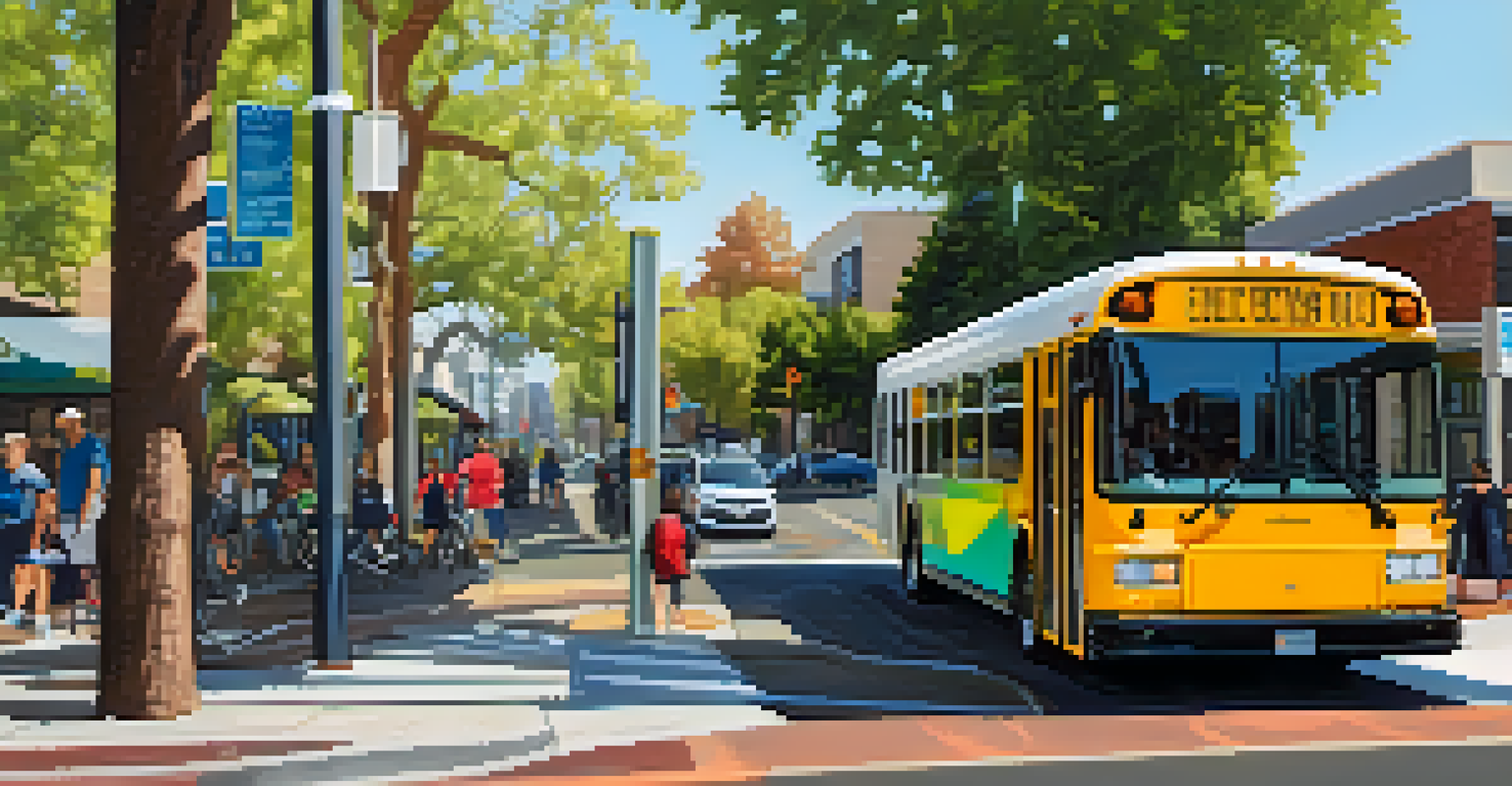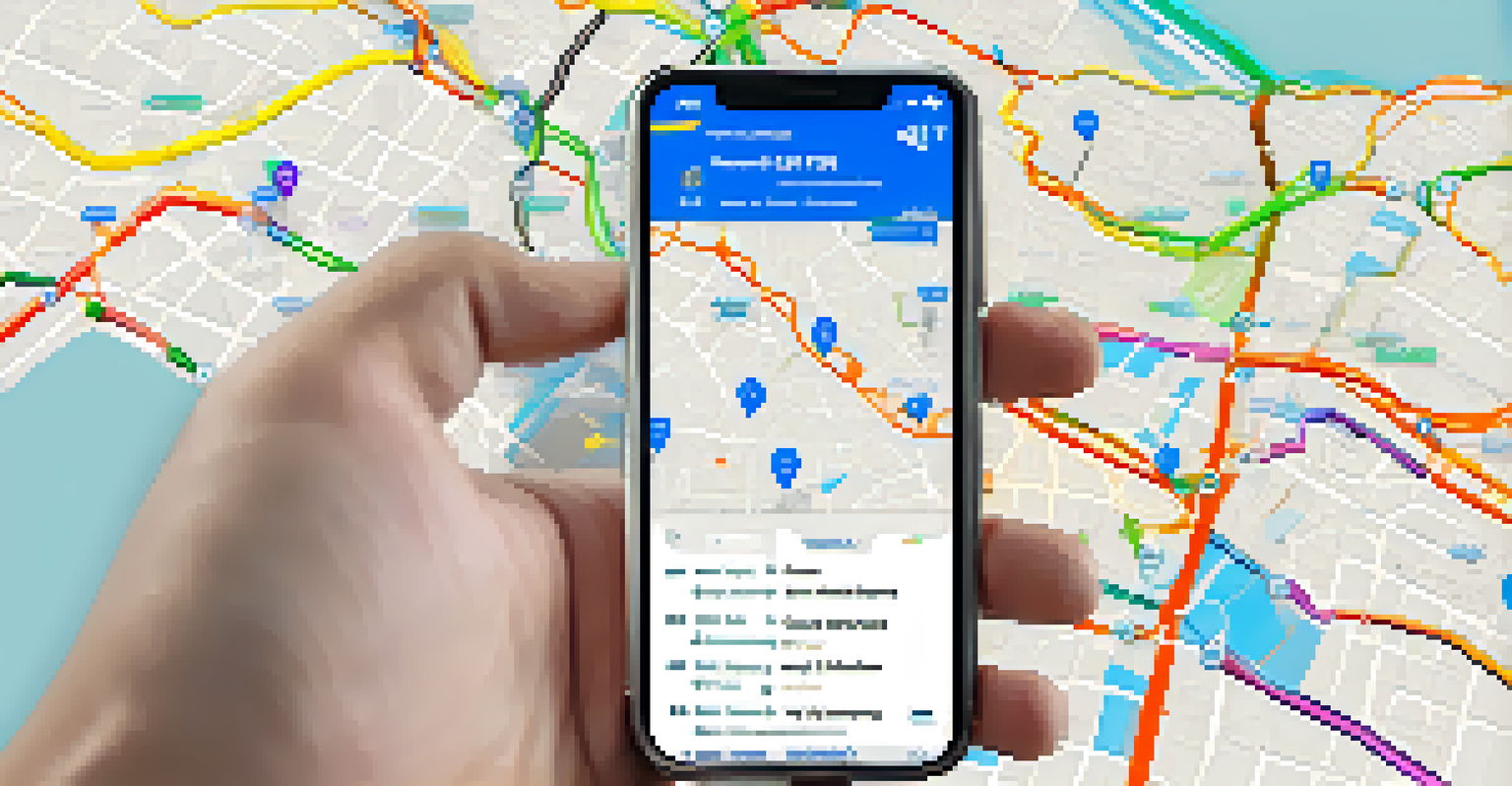Future Plans for Sacramento's Public Transportation Network

Overview of Sacramento's Current Public Transportation System
Sacramento's public transportation network, primarily managed by Sacramento Regional Transit (SacRT), includes light rail, buses, and paratransit services. This existing system forms the backbone of the city's transit options, connecting neighborhoods to business districts and educational institutions. However, as the city grows, these services face increasing demand and the need for modernization to meet the needs of a diverse population.
Public transportation is the backbone of any city, connecting people to jobs, schools, and opportunities.
Currently, light rail lines stretch over 40 miles, serving thousands of commuters daily. However, challenges such as limited coverage in suburban areas and outdated infrastructure are prompting discussions about improvements. These issues highlight the urgency for strategic planning to enhance connectivity and efficiency across the network.
As we look to the future, stakeholders are exploring various options to expand and innovate Sacramento’s transportation landscape. This includes integrating new technologies, increasing service frequency, and expanding routes to underserved areas. The goal is to create a more robust and user-friendly public transportation experience for all residents.
Key Projects on the Horizon for Public Transit
Several exciting projects are on the table that aim to transform Sacramento's transportation infrastructure. One of the most talked-about initiatives is the proposed extension of the light rail system, which could connect more neighborhoods to the downtown area and beyond. This extension is not just about adding tracks; it’s about enhancing accessibility and encouraging public transit use over personal vehicles.

In addition to light rail extensions, plans are in motion to improve bus rapid transit (BRT) services. BRT systems, which operate on dedicated lanes, can significantly reduce travel times and offer a more reliable commuting option. This means commuters could enjoy a faster, more efficient way to get to work or school, making public transit a more appealing choice.
Future Transit Expansion Plans
Sacramento is actively pursuing the extension of light rail and improvements in bus rapid transit to enhance accessibility and efficiency.
Moreover, the city is considering the introduction of electric buses to its fleet, promoting sustainability while also reducing operational costs. This shift not only aligns with environmental goals but also enhances the overall passenger experience. By investing in these key projects, Sacramento is gearing up for a public transit revolution.
The Role of Technology in Future Transit Solutions
Technology will play a pivotal role in the evolution of Sacramento's public transportation network. The introduction of mobile apps for real-time tracking and updates can significantly enhance user experience. Riders will be able to plan their trips with greater accuracy and convenience, making public transit a more viable option for everyday travel.
Sustainable transportation is not just a choice; it's a necessity for a thriving urban future.
Additionally, innovations such as contactless payment systems are being explored to streamline fare collection. Imagine hopping on a bus or train without fumbling for cash or tickets—just a simple tap on your phone! This kind of technology can help reduce boarding times and improve overall efficiency within the system.
Furthermore, data analytics will be increasingly utilized to understand travel patterns and adjust services accordingly. By analyzing ridership data, transit authorities can identify peak travel times and adjust schedules to better meet the needs of the community. This data-driven approach will ensure that Sacramento’s public transportation remains responsive and user-focused.
Community Engagement in Transportation Planning
Community engagement is crucial in shaping a public transportation network that meets the needs of all Sacramento residents. Recent town hall meetings and surveys have shown a strong interest in gathering public input on transit projects. This collaborative approach fosters a sense of ownership among residents and helps ensure that the developments align with community desires.
The city is also working to involve diverse groups, including those from underserved neighborhoods, in the planning process. By prioritizing voices from all demographics, Sacramento aims to create an inclusive transit system that serves everyone. This emphasis on community feedback can lead to more effective solutions that genuinely reflect the needs of the population.
Technology Enhancements Ahead
The integration of mobile apps and contactless payment systems is set to revolutionize the public transportation experience in Sacramento.
Incorporating public suggestions can also enhance awareness and support for upcoming projects. When residents feel heard, they’re more likely to advocate for and utilize improved transit options. It’s a win-win situation, ultimately leading to a stronger and more cohesive transportation network.
Sustainability Initiatives in Public Transportation
Sustainability is at the forefront of Sacramento's future transportation plans. The city is increasingly focused on reducing its carbon footprint through various initiatives aimed at making public transit more eco-friendly. This includes the transition to electric and hybrid vehicles, which produce fewer emissions compared to traditional buses.
Moreover, the promotion of public transit usage itself is a step toward sustainability. By encouraging more residents to utilize buses and light rail, Sacramento aims to decrease traffic congestion and lower overall vehicle emissions. This collective shift not only benefits the environment but also enhances air quality in urban areas.
In addition, planning for bike-sharing programs and pedestrian-friendly infrastructure is gaining traction. Integrating these elements with public transit options creates a holistic approach to transportation, promoting healthier lifestyles while reducing reliance on cars. Sacramento's commitment to sustainability reflects a broader trend in urban planning that prioritizes the planet and public health.
Funding Challenges and Solutions for Transit Expansion
Funding remains one of the significant challenges facing Sacramento's public transportation network. As ambitious plans for expansion and modernization take shape, securing adequate financial resources is crucial. Various funding mechanisms, including federal grants and local sales taxes, are being explored to support these initiatives.
Moreover, public-private partnerships are emerging as a viable solution to bridge funding gaps. By collaborating with private entities, the city can leverage additional resources and innovative ideas. This partnership approach not only provides financial support but also fosters a sense of shared responsibility for the community's transit future.
Community Engagement is Key
Involving diverse community voices in transportation planning is crucial for creating an inclusive and effective transit system.
Despite these challenges, there is optimism surrounding funding prospects. Increased public interest in sustainable transportation solutions has led to broader support for funding measures. As more residents advocate for improved transit options, there’s hope that necessary investments will be made to realize Sacramento's transit vision.
Looking Ahead: The Future of Sacramento's Transit Network
As we look ahead, the future of Sacramento's public transportation network is brimming with potential. The city’s commitment to modernization and expansion reflects a proactive approach to addressing the needs of a growing population. With planned projects and community engagement, Sacramento is setting the stage for a transit system that is efficient, inclusive, and sustainable.
Incorporating technology, prioritizing sustainability, and addressing funding challenges are all part of the broader vision. As these initiatives come to fruition, residents can expect a more integrated network that makes public transportation a viable choice for daily commuting. The goal is not just to move people from point A to point B but to create an interconnected community that thrives on accessibility.

Ultimately, the success of these plans relies on collaboration between city officials, transit authorities, and residents. By working together, Sacramento can cultivate a vibrant public transportation network that enhances quality of life for all. The future is bright for Sacramento’s transit system, and it’s an exciting journey ahead.